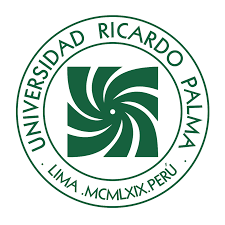Ecological gabions for flood protection and biotic balance in the Chacarilla town of the Matagente river
DOI:
https://doi.org/10.31381/perfilesingenieria.v20i21.6084Keywords:
river floods, ecological gabions, environmental impact, biotic balance, return period, maximum scourAbstract
River flooding continually threatens safety, infrastructure and health in urban environments and the environment, generating significant risks for communities. The objective of this article is to carry out the sizing of ecological gabion walls for flood protection and biotic balance in the Chacarilla town of the Matagente River. The methodology used was multidisciplinary from basic, specific and detailed studies. Empirical and numerical methods will be applied for hydrological and hydraulic conditions, as well as mathematical models for the sizing of the ecological gabion wall. The Leopold matrix was applied with a qualitative and quantitative approach for the analysis of environmental impact. For the processing and analysis of the information, different calculation tools were used such as ArcGIS Pro 2.0, HEC HMS, Hec Ras and Gawac 3.0. As the main results, the maximum flow was achieved first, which was 1379.63 m3/s for a return period of 140 years, which generated a maximum scour of 5.3 m along +0.000m to +880.00m of the river section. Therefore, the dimensions of the ecological gabion wall were 8 m high, 4.5 m wide for a total of 14960 blocks. A budget for the work was estimated at S/.6,699,633.85. As conclusions, it is defined that ecological gabion walls are a viable alternative to mitigate floods and care for the environment.
Downloads
References
Ministerio de Ambiente. El fenómeno EL NIÑO en el Perú. 1era Edición. Lima; 2014.
Agencia de Cooperación Internacional del Japón, “Estudio Básico de la Demanda de Control de Inundaciones en la República del Perú”, 2017, Estudio Básico de la Demanda de Control de Inundaciones en la República del Perú, Perú, Autoridad Nacional del Agua.
Palomino,C & Vinatea,B. “Evaluación de la defensa ribereña mediante muros de contención de concreto reforzado con la adición de fibras de plástico reciclado contra inundaciones en el sector de Cuspanca y la quebrada Acopaya, Huarochirí – Lima”. Repositorio Académico UPC.. https://repositorioacademico.upc.edu.pe/bitstream/handle/10757/668416/Palomino_SC.p df?sequence=3&isAllowed=y
Instituto Geofísico del Perú, “Análisis y evaluación histórica del fenómeno el niño en lima metropolitana: un aporte a la gestión del riesgo de desastres”, Ministerio del Ambiente, Lima - Perú, Informe Técnico N°027-2022/IGP CIENCIAS DE LA TIERRA SÓLIDA, agosto de 2022.
Autoridad Nacional del Agua, “Delimitación de la Faja Marginal del Río Matagente”, Ministerio de Agricultura, Lima - Perú, Resumen Ejecutivo, 1999.
Autoridad Nacional del Agua, “Informe de estimación por peligro inminente limpieza, descolmatación y conformación de dique con material propio, en ambas márgenes del río Matagente, sector Chacarilla, distrito el Carmen, provincia de Chincha, departamento de Ica”, Ica - Perú, 2023.
Santana H. & Lima P., “Propuesta de obra para el control de inundaciones en la cuenca baja del río Portoviejo, sector el Horcón - Ceibal, cantón Rocafuerte - Manabí – Ecuador”, Polo Del Conoc., vol. 6, n.º 9, agosto de 2021.
C. Mártinez, “Muro de contención tipo gavión con botellas plásticas PET rellenas de residuos de construcción y demolición.”, Trabajo de Grado, Fund. Univ. Juan Castanos, Tunja, 2020.
Gobierno del Perú, "Instituto Nacional de Estadística e Informática - INEI," Accedido el 26 de noviembre de 2023. Disponible: https://www.gob.pe/inei/
Ministerio de Transportes y Comunicaciones, “Manual de hidrología, hidráulica y drenajes" Accedido el 26 de noviembre del 2023. Disponible: https://spij.minjus.gob.pe/Graficos/Peru/2011/Octubre/10/RD-20-2011-MTC-14.pdf (pag 25)
“Inicio - Instituto CAPECO Líderes en Construcción”. Instituto CAPECO. Accedido el 28 de noviembre de 2023. [En línea]. Disponible: https://capeco.edu.pe/
Instituto Geológico Minero y. Metalúrgico. “GEOCATMIN”. GEOCATMIN. [En línea].
Disponible: https://geocatmin.ingemmet.gob.pe/geocatmin/
“Cálculo de Socavación General en Ríos”, Cálculo de Socavación General en Ríos - Fórmula de Lacey.
G. Gustavo Pinto, GAWAC 3.0 User Guide Manual, vol. 1. MACCAFERRI Eng. better solution, 2021.
Metodología para el Cálculo de las Matrices Ambientales. (2015, enero). Hidroar S.A. https://www.ambiente.chubut.gov.ar/wp-content/uploads/2015/01/Metodolog%C3%ADa-para-el-Calculo-de-las-Matrices- Ambientales.pdf
Beneficios de los muros vegetales en las ciudades. (s.f.). Energía y medio ambiente - Todo sobre energías renovables y sociedad. https://www.energia- medioambiente.com/beneficios-de-los-muros-vegetales-en-las-ciudades/
Published
How to Cite
Issue
Section
License
Copyright (c) 2024 Manuel Alejandro Custodio Salas, Lucy Gabriela Ayala Prado, Percy Raul Castro Vasquez, Oscar Rojas Hernandez , Gustavo Antezana Quiroz, Maiquel López Silva

This work is licensed under a Creative Commons Attribution 4.0 International License.
In the event that the manuscript is approved for its next publication, the authors retain the copyright and assign to the journal the right of publication, edition, reproduction, distribution, exhibition and communication in the country of origin, as well as in the abroad, through print and electronic media in different databases. Therefore, it is established that after the publication of the articles, the authors may make other types of independent or additional agreements for the non-exclusive dissemination of the version of the article published in this journal (publication in books or institutional repositories), provided that it is explicitly indicated that the work has been published for the first time in this journal.
To record this procedure, the author must complete the following forms:

1.png)








